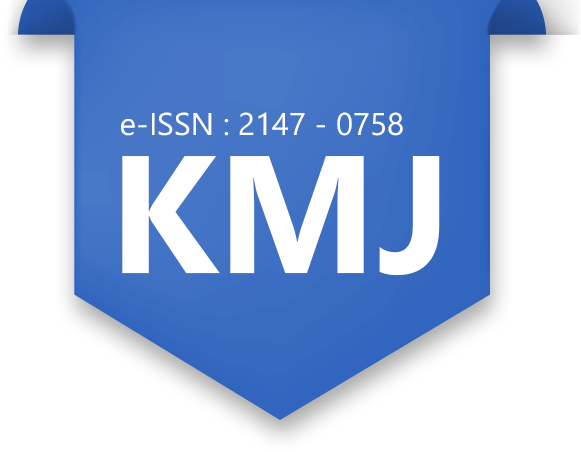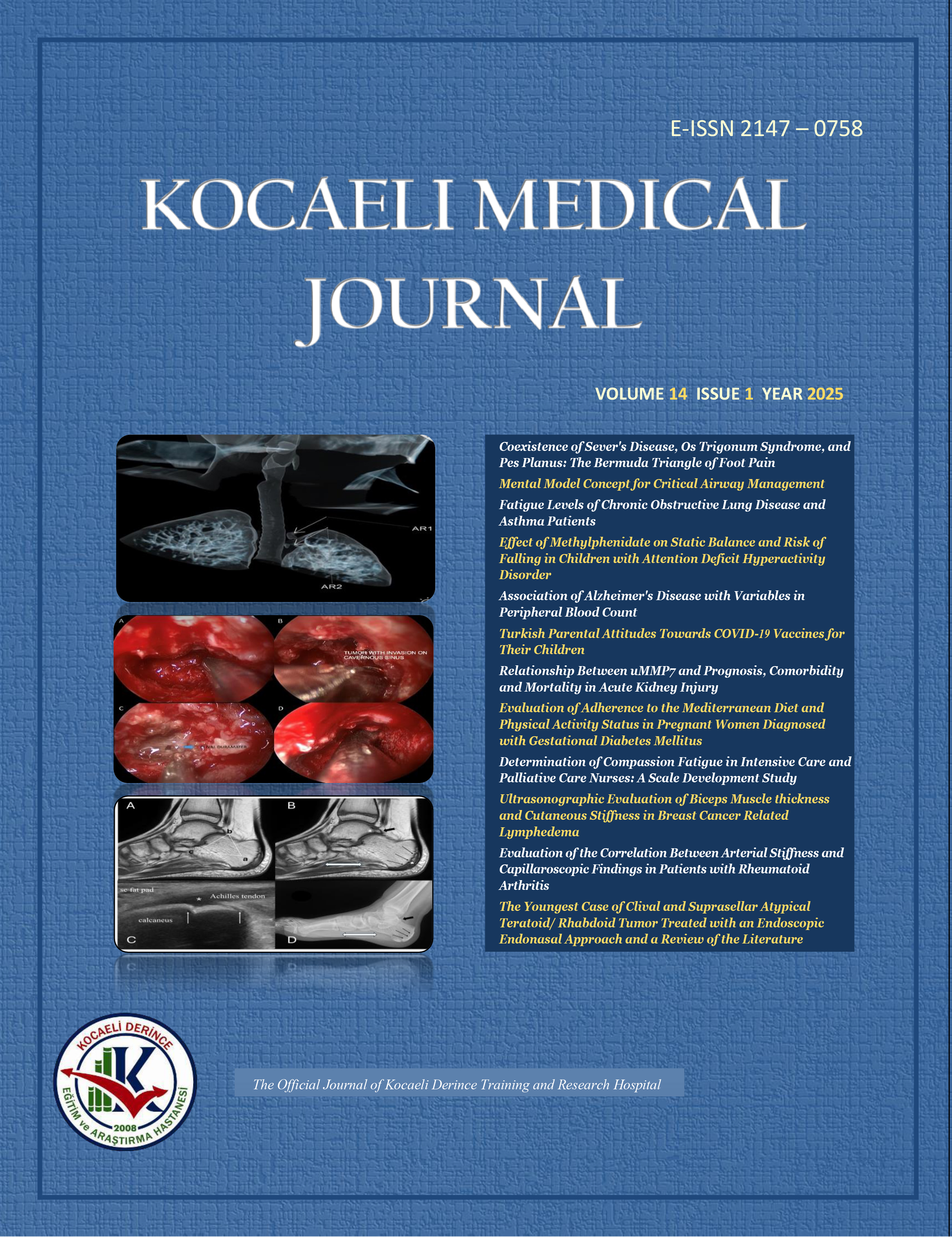
Neonatal Gastric Perforation: A Single-Center Experience From 2002 to 2015
Fatih Kılıçbay1, Ayşe Engin Arısoy2, Mustafa Alper Akay3, Ayla Günlemez21Division of Neonatology, Department of Pediatrics, Cumhuriyet University Faculty of Medicine, Sivas, Turkey2Division of Neonatology, Department of Pediatrics, Kocaeli University Faculty of Medicine, Kocaeli, Turkey
3Department of Pediatrics Surgery, Kocaeli University Faculty of Medicine, Kocaeli, Turkey
INTRODUCTION: Gastric perforation is a serious and life-threatening problem seen mostly in premature newborns in the neonatal period.Various causes play a role in the etiology.This retrospective study aimed to determine the etiology, basic risk factors, clinical features, prognosis, and mortality in newborns diagnosed with gastric perforation in our neonatal intensive care unit.
METHODS: Newborns diagnosed with gastric perforation between 2002 and 2015 were included in this study.Data including birth weight, gestational age,sex,risk factors,gastric perforation time,perforation location, and prognosis were recorded.
RESULTS: A total of eleven newborns diagnosed with gastric perforation were included in the study.The median gestational birth weight of the newborns was 2.014 g. Two of the newborns were term, and nine were preterm.Three of the newborns were female, and eight were male.The main clinical finding was abdominal distention, and pneumoperitoneum was detected in all newborns.The average age at diagnosis was 5.6 days.Spontaneous gastric perforation was detected in 6 newborns, and secondary gastric perforation was found in 5 newborns.Recurrent gastric perforation was detected in two newborns.The gastric perforation size was between 0.5 and 2.5 cm, and it was primarily detected in the greater curvature of the stomach.The absence of ınterstitial cells of Cajal (ICC) was shown in a gastric muscle biopsy taken from a newborn.The mortality rate was 45%.
DISCUSSION AND CONCLUSION: Gastric perforation is an emergency that threatens the life of newborns.It can often develop due to distal obstruction or the absence of ICC cells.It is essential to look for ICC cells in the stomach muscle biopsy material to monitor for recurrent gastric perforation.
Neonatal Gastrik Perforasyon: 2002'den 2015'e Tek Merkezde Bir Deneyim
Fatih Kılıçbay1, Ayşe Engin Arısoy2, Mustafa Alper Akay3, Ayla Günlemez21Sivas Cumhuriyet Üniversitesi Tıp Fakültesi, Çocuk Sağlığı ve Hastalıkları Anabilim Dalı, Neonatoloji Bilim Dalı, Sivas, Türkiye2Kocaeli Üniversitesi Tıp Fakültesi,Çocuk Sağlığı ve Hastalıkları Anabilim Dalı, Neonatoloji Bilim Dalı, Kocaeli Türkiye
3Kocaeli Üniversitesi Tıp Fakültesi,Çocuk Cerrahisi Anabilim Dalı, Kocaeli Türkiye
GİRİŞ ve AMAÇ: Mide perforasyonu yenidoğan döneminde daha çok prematüre bebeklerde görülen ciddi ve hayatı tehdit eden bir sorundur. Etiyolojide çok çeşitli nedenler rol oynamaktadır. Bu retrospektif çalışmada, yenidoğan yoğun bakım ünitemizde mide perforasyonu tanısı alan yenidoğanlarda etyolojiyi,temel risk faktörlerini, klinik özellikleri, prognozu ve mortaliteyi belirlemeyi amaçladık.
YÖNTEM ve GEREÇLER: Bu çalışmaya 2002-2015 yılları arasında mide perforasyonu tanısı alan yenidoğanlar dahil edildi.Doğum ağırlığı, gebelik yaşı, cinsiyet, risk faktörleri, mide delinme zamanı, perforasyon yeri ve prognozu içeren veriler kaydedildi.
BULGULAR: Mide perforasyonu tanısı konulan 11 yenidoğan çalışmaya dahil edildi. Yenidoğanların medyan gestasyonel doğum ağırlığı 2.014 gr idi. Vakaların 2 si term, 9'u preterm idi. Hastaların 3ü kız, 8 i erkekti. Ana klinik bulgu abdominal distansiyondu ve tüm hastalarda pnömoperitoneum saptandı. Ortalama tanı yaşı 5,6 gündü.Hastaların 6sında spontan mide perforasyonu, 5'inde ise sekonder mide perforasyonu saptandı.İki hastada tekrarlayan mide perforasyonu tespit edildi. Mide perforasyonun boyutu 0,5-2,5 cm arasında idi ve daha çok midenin büyük kurvaturunda saptandı.Bir hastadan alınan mide kası biyopsisinde interstisyel Cajal hücresinin olmadığı gösterildi.Ölüm oranı% 45 idi.
TARTIŞMA ve SONUÇ: Mide perforasyonu, yeni doğan bebeklerin hayatını tehdit eden acil bir durumdur. Çoğunlukla distal obstrüksiyon veya interstisyel Cajal hücrelerinin yokluğuna bağlı olarak gelişebilir. Tekrarlayan mide perforasyonunu izlemek için mide kası biyopsi materyalinde interstisyel Cajal hücrelerini aramak önemlidir.
Manuscript Language: English












